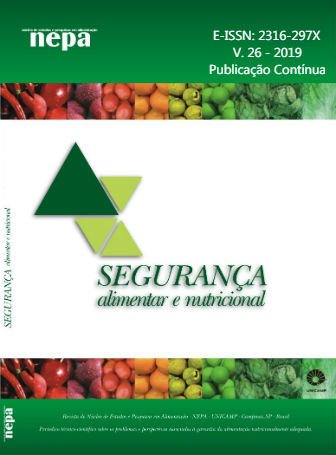Resumo
A ideia de que são necessárias alternativas para a produção convencional de carne bovina já é uma realidade. Técnicas decultura de células-tronco oriundas do tecido muscular visando a geração de carne artificial vêm sendo desenvolvidas de maneira promissora. Embora tenham sido realizados progressos consideráveis nos últimos anos, ainda há questões importantes a serem resolvidas como: restrições sociais e éticas, ajuste das condições de cultura,produção eficaz em grande escala e o desenvolvimento de meios de cultura econômicos e livres de produtos de origem animal. Portanto, embora promissora, a produção da carne artificial ainda é uma perspectiva a ser alcançada no futuro.Referências
FAO. World livestock. Livestock in Food Security. FAO publications; 2011.
Tuomisto HL,Mattos MJ. Environmental impactsofculturedmeat production. Environmental Science & Technology.2011;45(14):6117-6123.
Pandurangan M,Kim DH.A novel approach for in vitro meat production. Applied Microbiology Biotechnology.2015;99(13):5391-5395.
Mauro A.Satellite cell of skeletal muscle fibers.Journal Biophysic Biochemistry Cytology. 1961;9:493–495.
Corbu A,Scaramozza A,Badiali De Giorgi L,Tarantino L,Papa V,Rinaldi Ret al.Satellitecell characterization from aging humanmuscle.Neurological Research.2010;32(1):63-72.
Post MJ. Cultured meat from stem cells: Challenges and prospects. Meat Science. 2012;92:297-301.
Moritz MSM, Verbruggen SEL, Post MJ. Alternatives for large-scale production of cultured beef. Journal of Integrative Agriculture. 2015;14:208–216.
Stephens N,Ruivenkamp M.Promise and Ontological Ambiguity in the invitro Meat Image scape: From Laboratory Myotubes to the Cultured Burger. Science as Culture (Lond). 2016;25(3):327-355.
KumarVA, Taylor NL, Jalan AA, Hwang LK, Wang BK, Hartgerink JD. A nanostructured synthetic collagen mimic for hemostasis. Biomacromolecules. 2014;15(4):1484-1490.
Collins CA, Olsen I, Zammit PS, Heslop L, Petrie A, Partridge TA, Morgan JE. Stem cell function, self-renewal, and behavioral heterogeneity of cells from the adult muscle satellite cell niche. Cell. 2005;122(2),289–301.
Amit M, Chebath J, Margulets V, Laevsky I, Miropolsky Y, Shariki K, Peri M,Blais I,Slutsky G,Revel M,Itskovitz-Eldor J. Suspension culture of undifferentiated human embryonic and induced pluripotent stem cells. Stem Cell Reviews and Reports. 2010;6:248-259.
Zhao F, Pathi PG, Rayson W, Xing Q, Locke BR, Ma T. Effects of oxygen transport on 3-D human mesenchymal stem cell metabolic activity in perfusion and static cultures: Experiments and mathematical model. Biotechnology Progress. 2005; 21,1269-1280.
Gilbert PM, Havenstrite KL, Magnusson KE, Sacco A, Leonardi NA,et al.Substrate elasticity regulates skeletal muscle stem cell self-renewal in culture. Science. 2010;329(5995),1078-1081.
Wilschut KJ, Haagsman HP, Roelen BA. Extracellular matrix components direct porcine muscle stem cell behavior. Experimental Cell Research. 2010;316(3),341-352.
Vandenburgh H, Shansky J, Del Tatto M, Chromiak J. Organogenesis of skeletal muscle in tissue culture. Methods in Molecular Medicine. 1999;18,217-225.
Datta P,Ayan B,Ozbolat IT. Bioprinting forvascularand vascularized tissue biofabrication. ActaBiomaterialia.2017;51:1-20.
Kanatous SB, Mammen PP. Regulation of myoglobin expression. Journal of Experimental Biology. 2010;213(Pt 16), 2741-2747.
Gstraunthaler G. Alternatives to the use of fetal bovine serum:serum-freecell culture. ALTEX. 2003;20(4):275-281.
Jochems CE,Van Der Valk JB,Stafleu FR,Baumans V. The use of fetal bovine serum: ethical or scientific problem? Alternatives of Laboratory Animal.2002;30(2):219-27.
Zanicotti DG,Coates DE. Growing Adipose-DerivedStemCells UnderSerum-FreeConditions. Methods in Molecular Biology. 2017;1537:439-446.
Zhang Y,Li HF,Ma Y,Jin Y,Kong G,Lin JM. Microwave assisted extraction-solid phase extraction for high-efficient and rapid analysis of monosaccharides in plants. Talanta.2014; 129:404-410.
Carlberg C. Molecular Approaches for Optimizing Vitamin D Supplementation. Vitamins and Hormones. 2016;100:255-271.
FAO. Meat and meat products. Rome: FAO; 2016. p. 41-47.
McKee C,Chaudhry GR. Advances and challenges in stemcell culture. Colloids and Surfaces B Biointerfaces.2017;159:62-77.
Knight E, Przyborski S. Advances in 3D cell culture technologies enabling tissue-like structures to be created in vitro, Journal of Anatomy. 2015;227(6):746-756.
Janmey PA, Miller RT. Mechanisms of mechanical signaling indevelopment and disease. Journal of Cell Science. 2011;124(Pt 1):9-18.
Haycock JW. 3D cell culture: a review of current approaches and techniques. Methods of Molecular Biology. 2011;695:1-15.
Gattazzo F, Urciuolo A, Bonaldo P. Extracellular matrix: a dynamic microenvironment for stem cell niche. Biochimicaetbiophysicaacta.2014;1840(8):2506-2519.
Baraniak PR, McDevitt TC. Scaffold-free culture of mesenchymal stem cells pheroids in suspension preserves multilineage potential. Cell Tissue Research. 2012;347:701-711.
Lewis MC, MacArthur BD, Tare RS, Oreffo RO, Please CP. Extracellular matrix deposition in engineered micromass cartilage pellet cultures: measurements and modelling.PLoS One. 2016;11:e0147302.
Edmondson R, Broglie JJ, Adcock AF, Yang L. Three-dimensional cell culture systems and their applications in drug discovery and cell-based biosensors. Assay Drug Development Technology. 2014;12:207-218.
Bartosh TJ, Ylostalo JH, Mohammadipoor A, Bazhanov N, Coble K, Claypool K, Lee RH,Choi H,Prockop DJ. Aggregation of human mesenchymal stromal cells (MSCs) into 3D spheroids enhances their antiinflammatory properties. Proceedings of the National Academy of Sciences of the United States of America. 2010;107(31):13724-13729.
Bratt-Leal AM, Carpenedo RL, Ungrin MD, Zandstra PW, McDevitt TC. Incorporation of biomaterials in multicellular aggregates modulates pluripotent stem cell differentiation. Biomaterials. 2011;32:48-56.
Dutta RC, Dutta AK. Cell-interactive 3D-scaffold; advances and applications. Biotechnology Advanceded. 2009;27:334-339.
Rafiq QA, Coopman K, Nienow AW, Hewitt CJ. Systematic microcarrier screening and agitated culture conditions improves human mesenchymal stem cell yield in bioreactors. Biotechnology Journal. 2016;11:473-486.
Merten OW. Advances in cell culture: anchorage dependence. Philosophical transactions of the Royal Society of London. Series B, Biological Sciences. 2015;370(1661):20140040.
Panchalingam KM, Jung S, Rosenberg L, Behie LA. Bioprocessing strategies for the large-scale production of human mesenchymal stem cells. Stem Cell Research & Therapy.2015;6:225.
Sharma S,Raju R,Sui S,Hu WS. Stem cellcultureengineeringprocessscaleupand beyond. BiotechnologyJournal.2011;6(11):1317-1329.
Santos EJC.Aplicação Terapêutica das Células Tronco na Medicina Veterinária: Um Novo Escopo para a Bioeconomia.Revista Científica Multidisciplinar Núcleo do Conhecimento. 2017;01(02):536-546.
Wilks M, Phillips CJ. Attitudes to in vitromeat: a survey of potential consumers in the United States.PLoS One. 2017;12(2):e0171904.
Stephens N, Di Silvio L, Dunsford I, Ellis M, Glencross A, Sexton A. Bringing cultured meat to market: technical, socio-political and regulatory challenges in cellular agriculture. Trends in Food Scinece & Technology. 2018;78:155-166.
Hoogenkamp H. Clean cultured meat for today’s future: Over time, these innovative food will ease into the supply chain. Fleischwirtschaft International 2018;2:42-46.
Godfray HCJ, Springmann M, Sexton A, Lynch J, Hepburn C and Jebb S. Meat: the Future series Alternative Proteins. World Economic Forum. 2019.
The Good Food Institute. State of the Industry Report Plant-based Meat, Eggs and Dairy. 2018.
A revista Segurança Alimentar e Nutricional utiliza a licença do Creative Commons (CC), preservando assim, a integridade dos artigos em ambiente de acesso aberto.


